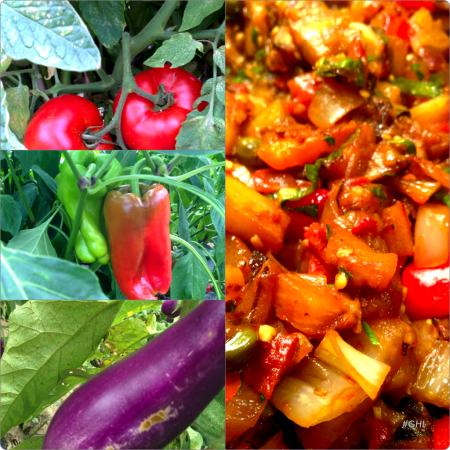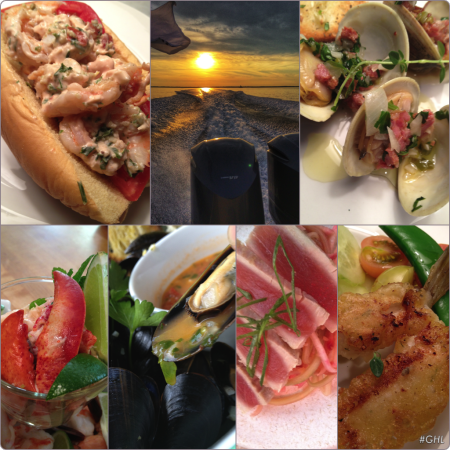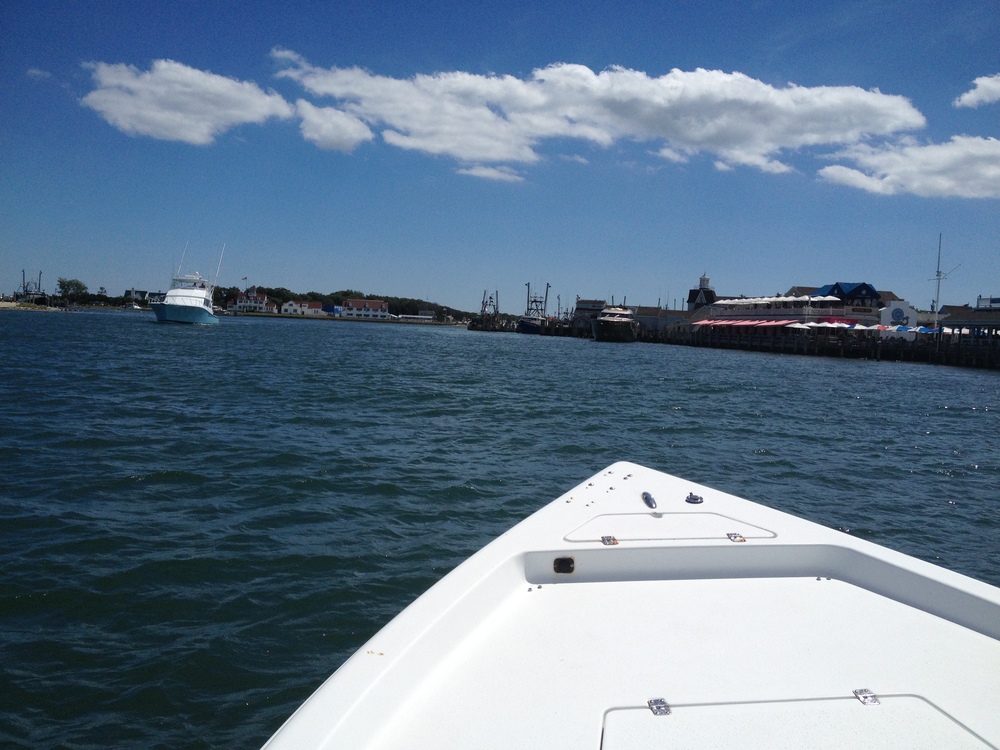Knowing where food is sourced is just as important as the final prepraed dish. One selection on the main course for my guest chef menu at JBJ Soul Kitchen was the 'fresh catch' of the day, which I prepared with local sourced tuna, the pride fish from my hometown on Long Island. As a chef it's always a Team effort, working with farmers and producers for the best of the season. For the fish course, master fisherman Doug Oakland of Oakland’s Restaurant in Hampton Bays stepped up. I was ensured there would be a tuna in "under 12." Note, the best tuna is caught 30-70 miles offshore Montauk LI. No easy task, but with Doug at the reel it was a guarantee. With a perfect 175-pound yellowfin tuna dressed for my guest chef farm & sea to-table menu, we traveled from Eastern Long Island to our friends and neighbors at Soul Kitchen in Red Bank, NJ. Thank you Doug, mission accomplished! With the support of Doug and many others we were able to serve a healthy menu of love for our neighbors to the west. PS. I kept the recipe simple, and let the flavor of your tuna shine!
The Oakland family, Doug, Christian and Doug Jr
The Oakland family, Doug, Christian and Doug Jr with a 223lb big eye tuna, a little bigger then the 175 pound yellowfin tuna Oaklands Restaurant donated for my guest chef JBJ Soul Kitchen Sunday Supper menu.
If there was ever a fish perfect for the fire, tuna fits the grill. Anyone who has tried to turn a delicate fish fillet only to find it stuck to the grate will appreciate the firm flesh of a tuna steak. Fresh tuna is ideal for bold flavors, but you don’t want to overpower the taste of the tuna. Start with fresh fish that has springy flesh and no fishy odor. Use caution, overcooking it will quickly make it dry. Sardinia is an island off the coast of Italy where fishing is a way of life. When the tuna is running, most families have tuna for dinner many nights in a row. The tuna in this recipe is quickly grilled for only a few minutes on each side, but you can cook it to your liking.
Tuna Sardinian Style
Makes 4 servings chefgeorgehirsch.com | From Adventures in Grilling cookbook
Four 5 ounce tuna steaks
4 Tablespoons olive oil
2 Tablespoons chopped fresh basil
Fresh ground black pepper
Pre heat grill to high.
Brush the tuna with 2 Tablespoons of olive oil, place it on a hot grill, and sear for two minutes on each side. Remove the tuna, set it aside, and keep it warm. Use caution, overcooking it will quickly make it dry. Top with a drizzle of extra virgin olive oil and caponata. Serve with Mousseline Potatoes.
A caponata is a staple in southern Italy. My version uses all farm fresh veggies in place of canned tomatoes. Make today and refrigerate at least a couple of days to bring out all the flavor of the fresh vegetables.
Chef George Hirsch's Garden Caponata
Caponata
Makes 2 cups
chefgeorgehirsch.com | From George Hirsch Living it UP cookbook and TV Series
2 Tablespoons olive oil
2 cups eggplant, peeled and chopped
1/2 cup onion, chopped
8 cloves Caramelized Garlic
12 plum tomatoes, split in half, deseeded and chopped
1 red bell pepper, chopped
1/4 cup green olives, chopped
2 Tablespoons Balsamic vinegar
1 teaspoon pure cane sugar
1 teaspoon each: dried basil, oregano, thyme
1 teaspoon hot sauce
1 Tablespoon capers
1 Tablespoon pine nuts, toasted
1 Tablespoon fresh basil, tear leaves into small pieces
Fresh ground black pepper and sea salt to taste
Preheat a large nonstick saucepan. Add the olive oil, eggplant, onion, garlic, tomatoes, and bell pepper. Cook until light brown. Add the vinegar, sugar, olives, dried basil, oregano, thyme and hot sauce. Cook for 15 minutes. Add pepper and sea salt to taste. Serve warm, room temperature











